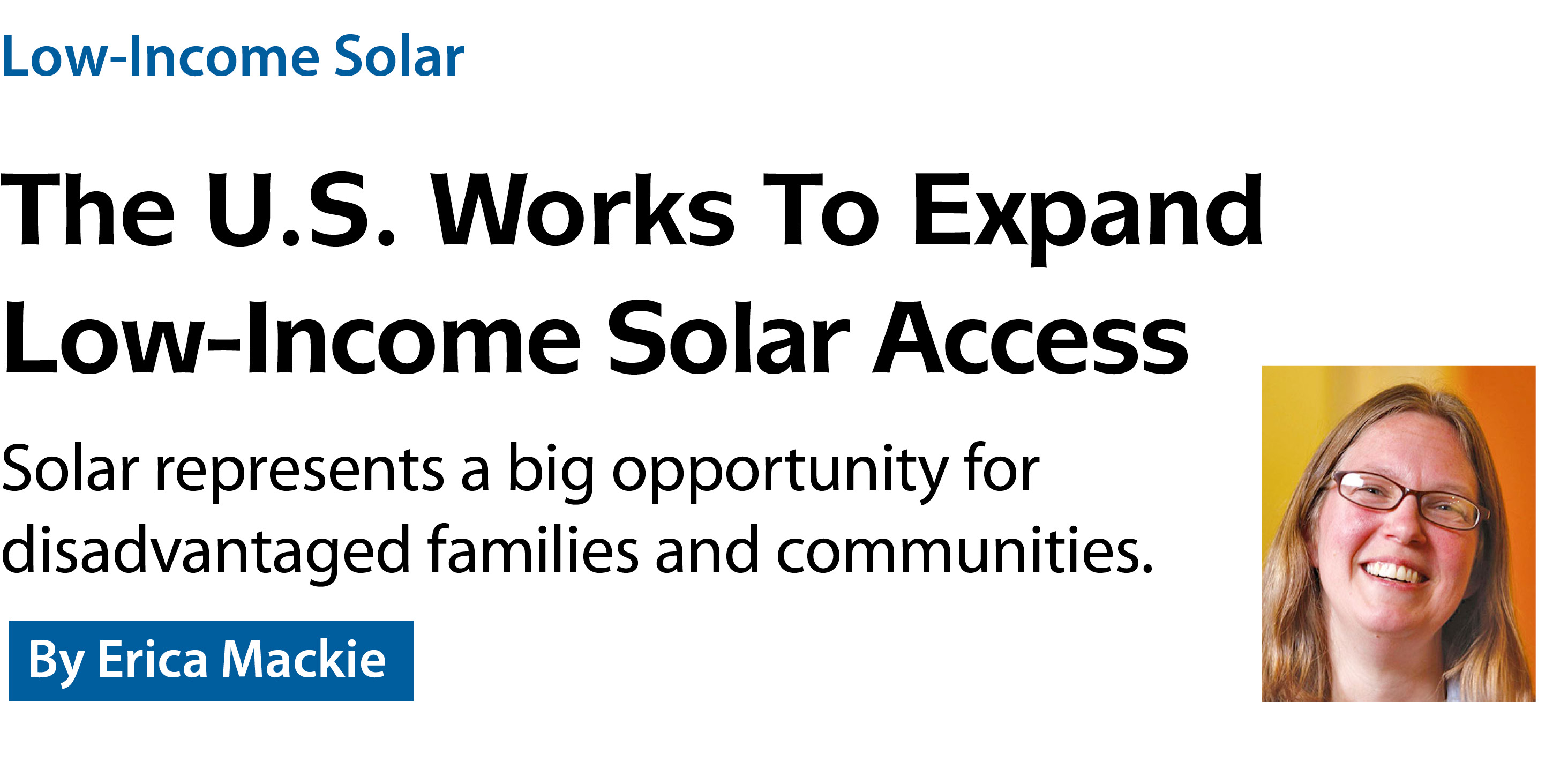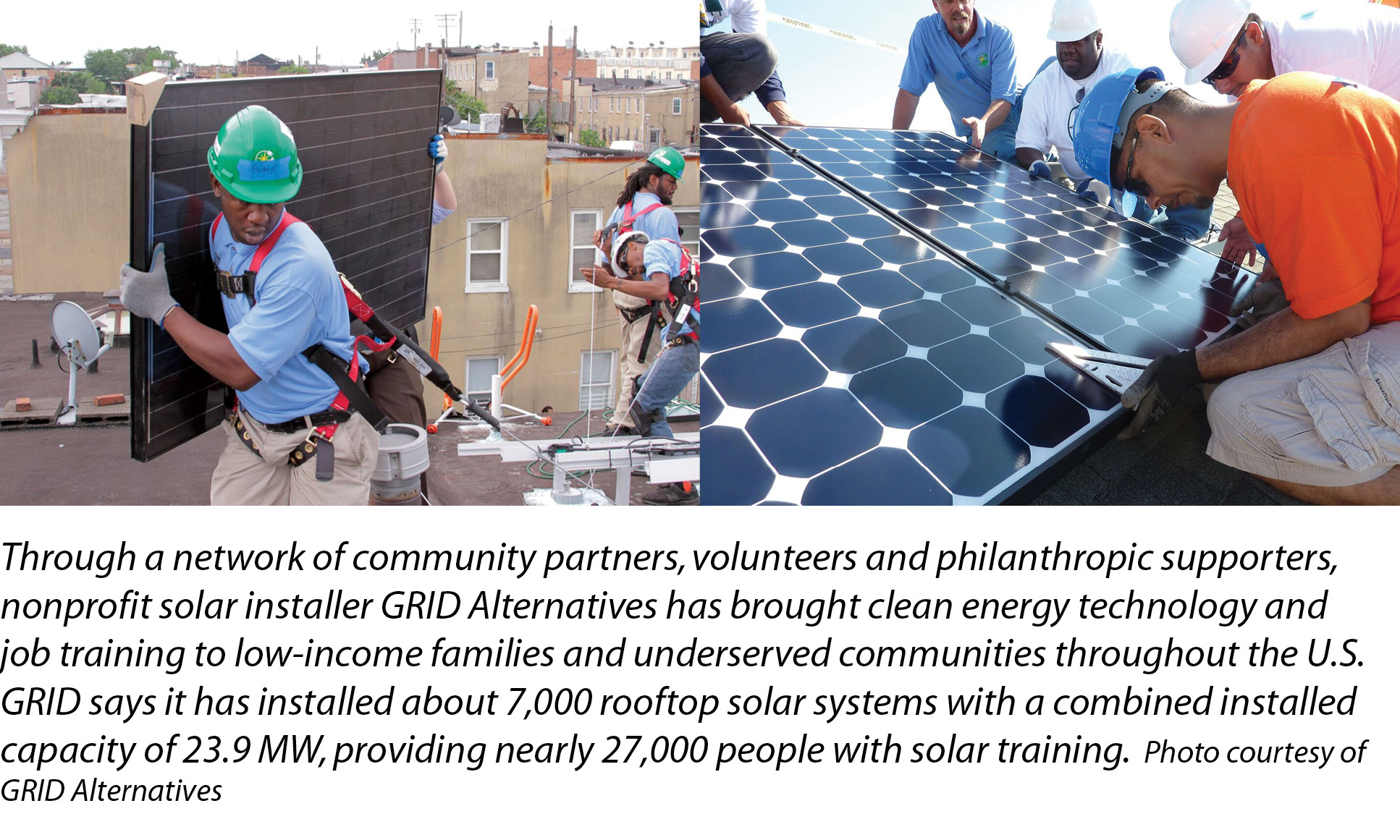

301 Moved Permanently
In early March, the U.S.’ one-millionth solar installation went online. This milestone not only marks solar energy’s mainstream moment in our national energy mix, but also creates the opportunity for policymakers and our industry to ensure the next million installations bring solar’s economic benefits to disadvantaged communities.
Solar can provide economic relief for struggling families, lower utility bills and provide well-paid career opportunities that require no advanced training.
The opportunity to deploy solar and create jobs in underserved communities is huge. Over 6 million affordable-housing units currently exist in the U.S., and census data suggests around 22 million owner-occupied households have incomes at or below 80% of their area median income.
But solar for low-income communities isn’t going to happen by itself. Although the cost of solar keeps falling, dropping 17% in 2015 alone, the investment required to go solar remains a significant barrier for many families who struggle to make ends meet every month.
An average residential solar system will cost between $15,000 and $29,000 all in - no small chunk of change considering the national median household income was $53,600 in 2014.
However, upfront cost isn’t the only hurdle to overcome. Physical factors such as tree shading or roof orientation, multifamily or shared-roof housing status, and economic vulnerability of lower-income families are real barriers putting solar out of reach for those who stand to benefit most.
Luckily, these issues are not insurmountable. Federal, state and local governments - and, increasingly, utilities - now see solar as a cost-effective way to provide energy assistance and reduce housing costs for lower-income families and are developing some innovative approaches.
This spring, we at GRID Alternatives partnered with Vote Solar and the Center for Social Inclusion to launch a Low-Income Solar Policy Guide outlining programs and policies that are successfully increasing solar access nationwide and highlighting opportunities for scaling them up.
Single-family rooftop
Most of the U.S.’ solar systems have been installed on single-family homes, where customers use rooftop panels to meet all or part of their energy needs while sending any excess power back to the grid.
Upfront costs, shared roofs and older housing stock can make adding rooftop solar tougher in disadvantaged communities, but smart, comprehensive policies and programs for households qualifying as low-income can expand solar access among single-family homeowners.
California was the first state to invest in single-family solar access in 2006 with its Single-family Affordable Solar Homes (SASH) program, a ratepayer-funded program providing rebates for solar on qualifying homes. Additional funding has recently been invested from the state’s cap-and-trade program to expand solar among families in “environmentally and economically disadvantaged communities.”
The programs pair solar installations with workforce training to help residents access new career opportunities. To date, the programs have added nearly 6,500 rooftop solar systems, reducing energy costs an average of around 75%, and provided training to over 19,000 individuals.
Elsewhere in the country, Massachusetts has used innovative financing tools to improve solar access. The Massachusetts Solar Loan program offers interest rate buy-downs and loan guarantees to low-income families, providing cashflow-positive loans from day one with risk protection to lenders that offer loans to homeowners with lower credit ratings.
Other states and localities are using on-bill financing, solar renewable energy credits (SRECs), and community purchase programs to make solar more accessible to homeowners.

Multifamily housing
Millions of Americans live in multifamily affordable-housing complexes, and utility bills are usually the largest and most volatile portion of a housing development’s overall budget. Stabilizing costs through solar and energy efficiency helps owners and managers maintain operating budgets, retain tenant services and avoid raising rents.
The Obama administration recognized this opportunity when it included solar targets for federally assisted housing in the president’s Climate Action Plan. Now called Renew300, the U.S. Department of Housing and Urban Development-run initiative maintains a goal of putting 300 MW of solar on affordable housing by 2020.
However, complex financing and regulatory hurdles have made the multifamily affordable-housing market slow to take off, making technical assistance efforts critical. This year, with support from The JPB Foundation, we launched a program to provide technical assistance to multifamily developers, managers and owners at no cost.
Creative approaches to financing are also needed to incentivize adoption and remove barriers in this sector. Massachusetts has been a leader here, having established a carve-out within the state’s renewable portfolio standard that provides a higher ratio of SRECs for each megawatt-hour produced from projects serving low-income customers compared with other installations, creating a larger cost offset. The Massachusetts Solar Loan program also applies to small multifamily projects by lowering borrowing costs, and Boston Community Capital, a community development finance institution, created a third-party ownership model eliminating the need for upfront capital and passing immediate savings onto its clients
Green banks such as the Connecticut Green Bank and the Hawaii Green Infrastructure Authority are using low-cost loans and credit enhancements to reduce borrowing costs for developers - another effective tool.
California is leading the nation in direct investment in multifamily solar. In 2015, it passed a bill directing up to $100 million annually in cap-and-trade revenues to multifamily affordable solar, starting in 2017. This is on top of its long-running Multi-family Affordable Solar Housing Program, which like SASH, provides rebates to qualifying systems.
Community solar
The newest solar development model may be the most exciting opportunity for delivering clean, affordable power to low-income residents. Community solar, which allows multiple customers to share in a single off-site installation, improves access by removing roof space requirements - a barrier for renters, apartment dwellers and households with unsuitable roofs.
State policymakers in Colorado clearly defined portions of the state’s trailblazing Community Solar Gardens Act to benefit low-income customers. Five percent of all shared solar projects must be reserved for low-income customers, and community solar garden subscribers receive full retail credit for their portion of produced power, minus a reasonable charge to cover utility grid access costs. This bill credit can be carried forward if it exceeds the customer’s electricity use in any given billing period.
Even with this provision, barriers remain for low-income families who lack upfront capital or good credit. For community solar to effectively reach and benefit these communities, it needs to be structured in a way that reduces or eliminates these barriers while also significantly lowering energy costs. Dedicated low-income community solar projects can function as direct energy assistance, with developers assuming installation costs and passing the savings to consumers.
Colorado utilities are pioneering this approach. Grand Valley Power, a rural electric cooperative in Mesa County, developed a utility-owned dedicated low-income solar project last year in partnership with GRID Alternatives. Southwest Colorado rural electric co-op Empire Electric developed a second project this spring, and several more are slated for construction in 2016-17, all through a demonstration project with the Colorado Energy Office. Although the projects differ slightly in ownership and rate structure, they commit to lowering energy costs for low-income subscribers by 50% or more. These projects, sited in economically struggling rural areas, will also provide solar job training for residents.
Opportunity
All of these efforts are showing dividends, lowering the energy cost burden for low-income families and affordable-housing owners, and showing solar as a viable solution in these communities. But they are still piecemeal, dependent on state and local policies, resources and initiative.
Solar’s continued growth across the U.S. is a golden opportunity. Investment in low-income access at a national scale will ensure that the next million solar installations are equitably distributed, as well as help make our nation’s transition to clean energy a success.
Low-Income Solar
The U.S. Works To Expand Low-Income Solar Access
By Erica Mackie
Solar represents a big opportunity for disadvantaged families and communities.
si body si body i si body bi si body b
si depbio
- si bullets
si sh
si subhead
pullquote
si first graph
si sh no rule
si last graph